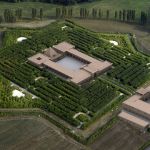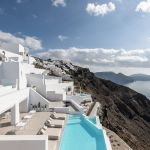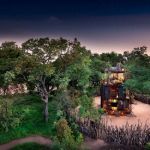
The Labirinto della Masone
The extraordinary cultural park of Franco Maria Ricci in Parma
June 2nd, 2019
In mythology the labyrinth has different connotations of meaning depending on the era and society we are talking about. For the Greeks, for example, it was a symbol of power and could hide in its heart the monstrous Minotaur, the famous creature of half man and half bull; in the Middle Ages it coincided with faith and in the eighteenth century it represented the joy of getting lost and finding oneself. In Italy, Fontanellato, a village in the province of Parma rich in history and art, there is one that embodies all these ideas: the Labirinto della Masone. Designed by Pier Carlo Bontempi and Davide Dutto, the maze was born from the will of the publisher Franco Maria Ricci:
"I have always been fascinated by Labyrinths. Together with the Gardens, they are among the oldest fantasies of humanity. The Garden, or Eden - so beautiful that Adam and Eve, newly created, continued to crumple their eyes - embodies innocence and happiness; the Labyrinth is, instead, a creation of Power and a source of turmoil. It reflects our perplexed experience of reality. I dreamt for the first time of building a Labyrinth about thirty years ago, at a time when, on several occasions, I had a friend as well as a very important collaborator of the publishing house I had founded, in my country house near Parma: the Argentinean writer Jorge Luis Borges. The Labyrinth has always been one of his favourite themes; and the trajectories that his hesitant blind passages drew around me made me think of the uncertainties of those who move between bifurcations and enigmas. I think that looking at it, and talking with it about the strange paths of men, the first embryo of the project was formed that finally, in June 2015, I opened to the public."
The result of this "dream" is the largest labyrinth in Europe, a maze of Roman-style routes with a star-shaped layout (inspired by Renaissance fortified cities, such as Sabbioneta or Palmanova), with dead ends and small traps. In the middle of the Labirinto della Masone there is a square of two thousand square meters surrounded by arcades and large halls that hosts concerts, festivals, exhibitions and other cultural events. On this building there is a pyramid-shaped chapel, but there is also a large library dedicated to the most illustrious examples of typography and graphics, a museum, home of the publishing house Franco Maria Ricci (about 500 works from the sixteenth to the twentieth century) and many spaces dedicated to refreshment as a cafeteria or restaurant. All these architectural works are made of handmade bricks and have as their point of reference the great architects of the period of the French Revolution: Boullée, Ledoux, Lequeu and the Italian Antolini.
The real peculiarity of the Labirinto della Masone? The fact that it is surrounded by bamboo plants, an evergreen plant loved by Ricci. In recent years, the man has planted more than 20,000 bamboos and in the park you can find about twenty different species, from the dwarf to the giant ones. In order to give more coherence to the whole project, even the parquet floors of the buildings have been made with the same material. The Labirinto della Masone complex is open every day (except Tuesdays) from 10.30 to 19.00. The full price ticket costs €18 and offers access to the entire complex and the art collections. For more information visit the official website.


































































